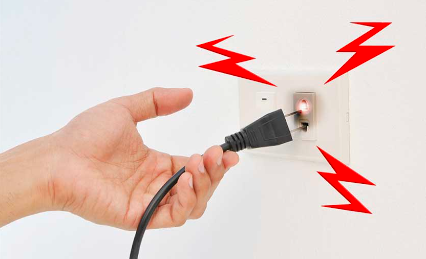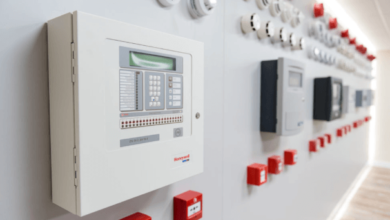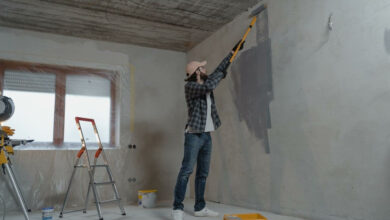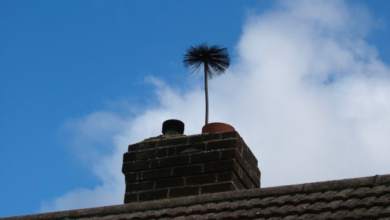Navigating Common Electrical Glitches in Homes and Their Solutions

Navigating the electrical intricacies of a residential setting can often feel daunting. From flickering lights to malfunctioning outlets, these common electrical issues can disrupt daily life and pose safety hazards if left unaddressed. Sarkinen Electrical’s electricians in Vancouver can help you resolve these issues in a professional manner. We’ll delve into some of the most encountered electrical problems in homes and unravel effective troubleshooting techniques to mitigate them.
Flickering Lights
Flickering lights can be more than just a nuisance; they might indicate underlying electrical issues. One common culprit is a loose or faulty light bulb. Begin troubleshooting by tightening or replacing the bulb to see if the problem persists. If the flickering persists, it could signal a more significant issue like a loose electrical connection or an overloaded circuit. In such cases, consulting a professional electrician is recommended to ensure thorough diagnosis and safe resolution.
Read also: Do You Need a Home Electrical Inspector in House Wiring? (Hint: YES!)
Dead Outlets
Encountering dead outlets is another prevalent issue in residential electrical systems. Before diving into complex solutions, start with a simple check of the circuit breaker or fuse box. Sometimes, a tripped breaker or blown fuse is the root cause of the problem. Resetting the breaker or replacing the fuse can restore power to the affected outlet. However, if this doesn’t resolve the issue, there might be a wiring problem or a faulty outlet that requires professional attention.
Circuit Overloads
Circuit overloads are a common issue in households, especially with the increasing number of electronic devices. This occurs when the demand for electricity exceeds the circuit’s capacity, leading to tripped breakers or blown fuses. To troubleshoot this, redistribute the devices across different circuits to balance the load. Consider upgrading to higher amp circuits or adding additional circuits to accommodate the electrical needs of modern living spaces. Seeking guidance from an electrician can ensure a safe and effective resolution.
Constantly Tripping Breakers
Frequent breaker trips can indicate various underlying issues. Start by identifying the appliances or devices that are tripping from the circuit. High-powered appliances like refrigerators or air conditioners can overload circuits, especially if they share the circuit with other devices. Unplugging or redistributing these devices can alleviate the problem. If the breaker continues to trip, it might signify a wiring issue or a faulty breaker that necessitates professional inspection and repair.
Electrical Shocks or Sparks
Experiencing electrical shocks or witnessing sparks from outlets is a serious concern that requires immediate attention. These incidents could signify faulty wiring, overloaded circuits, or damaged outlets. Avoid touching the affected outlet and refrain from using nearby electrical devices. Turn off the power to the affected circuit from the breaker box and enlist the expertise of a licensed electrician to assess and rectify the issue promptly. Ignoring such warning signs can lead to hazardous situations, including electrical fires.
Electrical Panel Issues
Issues with the electrical panel can manifest in various ways, such as frequent breaker trips, overheating, or strange noises. One common cause is an overloaded panel, where the electricity demand exceeds the panel’s capacity. Upgrading to a higher capacity panel or redistributing the load across multiple panels can alleviate this issue. Additionally, outdated or faulty panels may pose safety risks and should be replaced by a qualified electrician to ensure compliance with modern electrical standards.
Wiring Problems
Faulty or outdated wiring can lead to many electrical problems in residential settings. Symptoms of wiring issues include flickering lights, power surges, and electrical shocks. DIY troubleshooting for wiring problems is not recommended due to the inherent safety risks. A licensed electrician should inspect and diagnose wiring issues, which may include rewiring sections of the house or replacing damaged wiring. Ignoring wiring problems can lead to more severe issues like electrical fires, making timely intervention essential.
GFCI Outlet Malfunctions
Ground Fault Circuit Interrupter (GFCI) outlets are designed to protect against electrical shocks in areas prone to moisture, such as kitchens, bathrooms, and outdoor spaces. If a GFCI outlet malfunctions, it can pose significant safety hazards. Troubleshooting GFCI outlets involves pressing the reset button on the outlet itself or the GFCI breaker in the electrical panel. If resetting doesn’t resolve the issue, there may be a wiring problem or a faulty GFCI outlet that requires professional attention to ensure proper functioning and safety compliance.
Navigating these additional electrical challenges requires a keen understanding of electrical systems and adherence to safety protocols. Homeowners should prioritize regular maintenance checks, promptly address any electrical anomalies, and seek professional help when needed to safeguard their homes and loved ones. By staying vigilant and proactive, residential electrical systems can operate efficiently and safely, providing peace of mind to homeowners.
Navigating common electrical problems in residential settings necessitates a blend of caution, basic troubleshooting skills, and when needed, professional assistance. Whether it’s flickering lights, dead outlets, circuit overloads, tripping breakers, or alarming electrical occurrences, addressing these issues promptly is crucial for safety and uninterrupted functionality. By understanding the root causes and implementing appropriate solutions, homeowners can ensure a well-maintained and secure electrical infrastructure.





